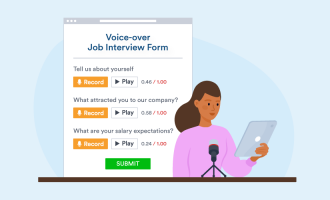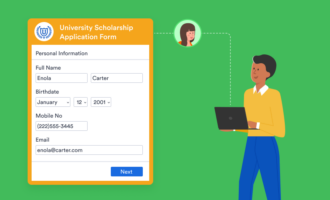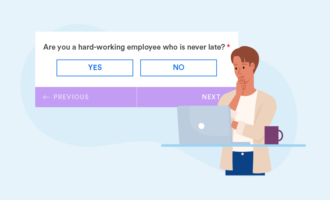If there’s any area of your business or organization you want to improve — customer retention, marketing initiatives, increased sales, new product development, etc. — getting into the hearts and minds of your current customers and your desired audience is key.
And while there are many ways to gather this kind of intel, one of the best is the questionnaire method of data collection.
Surveys vs questionnaires
If you’ve done any research online about how to collect data from your audience, you’ve likely noticed people use the terms “survey” and “questionnaire” interchangeably. But are they the same thing?
Actually, they’re not.
Although both surveys and questionnaires can help you gather valuable insights into your audience, a questionnaire is one stand-alone method of data collection (among several), while a survey describes the entire process of collecting, aggregating, and analyzing responses from various methods of data collection — and questionnaires are among them.
Learn more about surveys vs questionnaires here, and discover which one you should use to collect data for your next project.
Use cases for questionnaires
You can use the questionnaire method of data collection for a number of purposes:
- To determine what your market wants related to the product or service you provide (for market analysis)
- To get helpful feedback from customers after a purchase
- To get intel on customer demographics and preferences to use for product (or service) development
- To gauge the effectiveness of your customer service and monitor customer satisfaction
- To determine and inform marketing initiatives
- To improve business processes
A few helpful pointers on questionnaires
There’s more than one kind of questionnaire. Which approach you use will depend on your organization’s mission and offerings as well as the kind of information you’re seeking. Customer satisfaction surveys and product use satisfaction surveys are two types of questionnaires you might want to deploy in a business setting.
Your questionnaire can be structured or unstructured (or some combination of the two). For example, a structured questionnaire collects quantitative (numerical) data, while an unstructured questionnaire collects qualitative data (like personal preferences).
There are several question types. Three of the most widely used are open-ended questions (which collect qualitative data and allow respondents to answer more broadly), close-ended questions (i.e., those that require a yes or no response), and multiple-choice questions. Your questionnaire can include all three of these question types — in fact, varying the question type tends to keep respondents more engaged.
Qualities of a good questionnaire
To create a successful questionnaire, you must have in-depth knowledge and insight into your target market or audience first; that’s how you’ll know which questions to ask.
You also have to be clear on what you’re trying to measure — such as which business or operation areas you’re trying to improve (customer service, product development, marketing, etc.) — so you can design your questions to collect feedback in those specific areas.
Once you know what kind of actionable data you need to make improvements, you can incorporate a mix of qualitative and quantitative questions of the various types mentioned above to gather the data you want.
Here are other useful tips for designing an effective questionnaire:
- Make sure every participant sees the same questions.
- Ask neutral, non-leading questions.
- Employ several different question types so respondents stay engaged and complete the survey.
- Include at least a few open-ended questions to gain more in-depth insights into your customers’ habits and practices related to your product or service.
- Arrange your questions from easy to more challenging. For example, start with basic demographic questions before moving into multiple-choice or open-ended questions about the product or customer experience.
One of the biggest things to avoid when designing your questionnaire is making it too long — it needs to be long enough to get the data you require, but not so long that it’s annoying or difficult for respondents to complete.
We’ve all been there: You open an email that politely asks for feedback and promises that it won’t take more than 5–10 minutes. But once you start the questionnaire, you realize it’s really going to take closer to 30 minutes, and you think, “Oh, please. I don’t have time for that.” And you close the survey without finishing it.
Your questionnaire should contain the minimum number of questions that will get you the data you need — no more. You can always ask an open-ended question at the end, like, “Is there anything else you’d like to share that this questionnaire didn’t address?” Just make the response optional.
And be on the lookout for any bias in the questions you develop — you don’t want to reveal an opinion of the business or organization owner (or the person creating the questionnaire).
Successful organizations regularly collect data to help make good business decisions, create new products and services, improve processes and practices, and grow their companies. And as an added benefit, when you query your customers, you show them that their opinion matters. That builds goodwill that will go a long way in creating true customer loyalty.
Ready to survey your audience so your business or organization can enjoy some of the same benefits?
The questionnaire method of data collection is simple when you use powerful tools like Jotform’s questionnaire templates. Choose one template from more than 250 options and customize it with our drag-and-drop form builder — write your own questions, add rating scales and survey tables, and change the fonts and colors to make an engaging, effective questionnaire that’s uniquely yours.
































Send Comment: